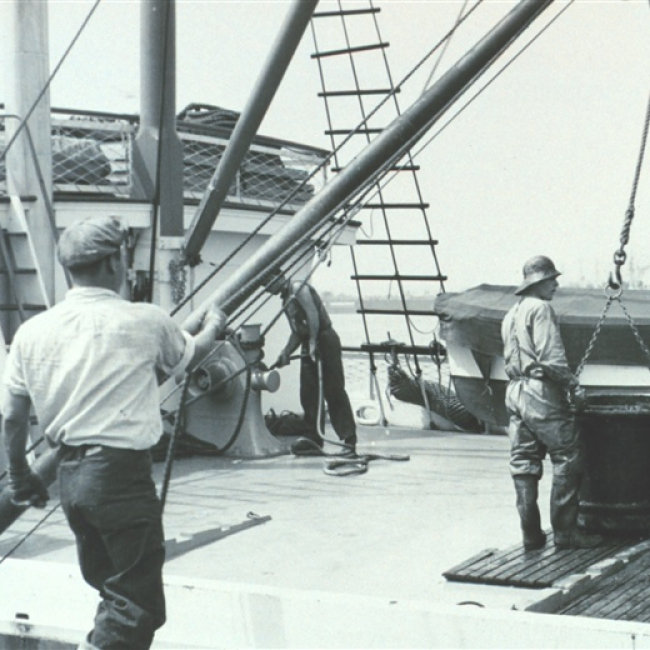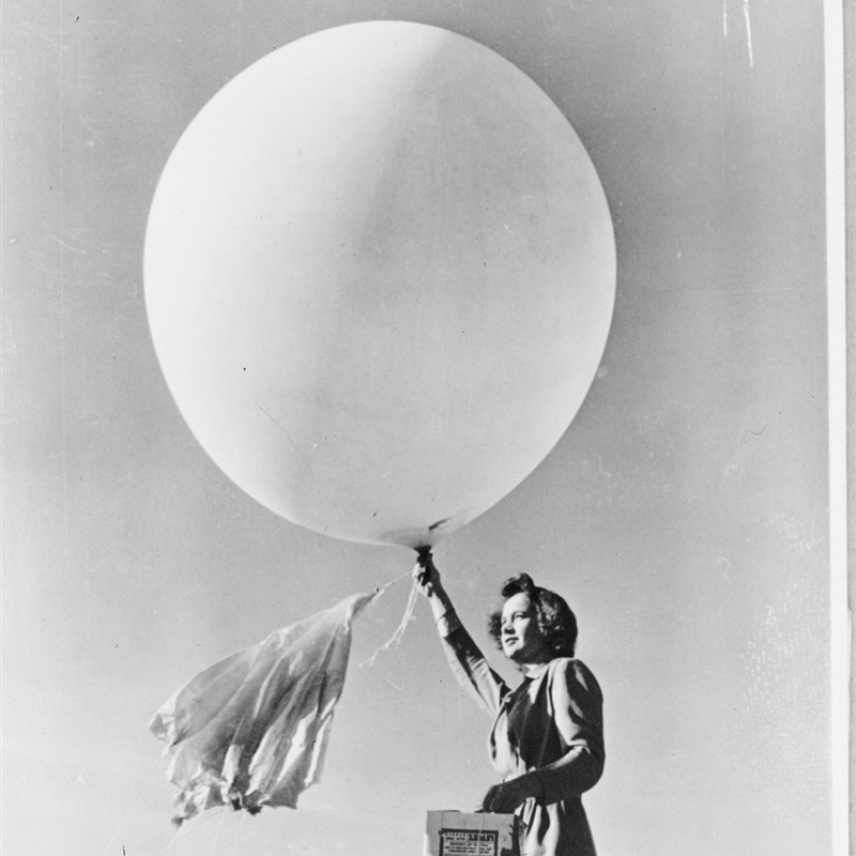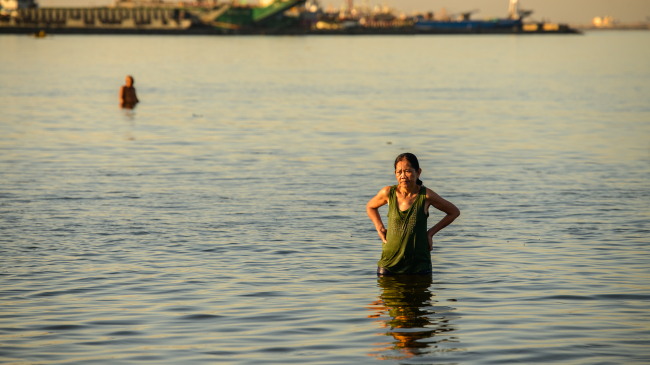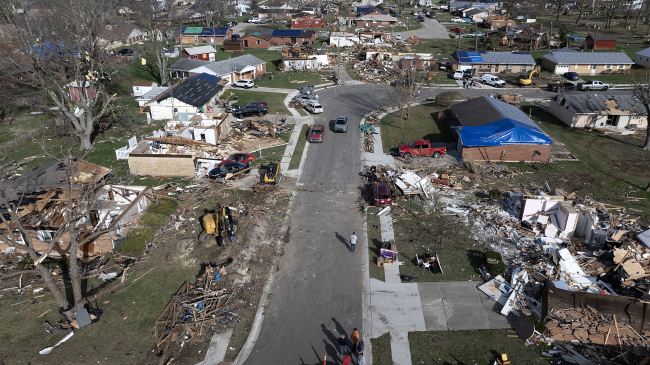An Interview with Debbie Lee and Mark Osler
For the first time ever, engineers and climate scientists are working together at the enterprise level to assess and address the impacts of climate change on the buildings, roads, bridges and other infrastructure. A new partnership, formalized in 2021 between NOAA and the American Society of Civil Engineers offsite link, aims to make that “built environment” more climate resilient.
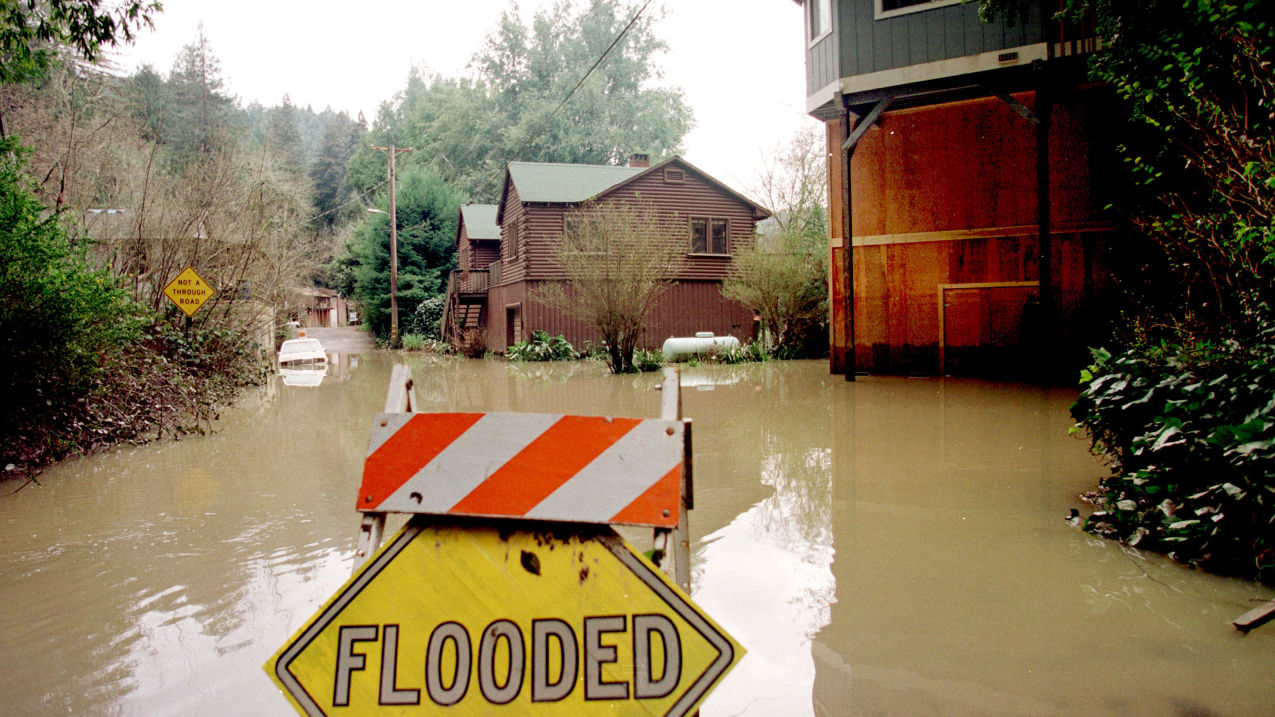
Flooded homes along the Russian River in California. NOAA scientists and colleagues are installing the first of four permanent "atmospheric river observatories" in California this month, to better monitor and predict the impacts of powerful winter storms associated with atmospheric rivers (Image credit: NOAA)
There’s a particular urgency to the work – NOAA calculated that 2022 was the third most costly year on record for weather and climate-related disasters, with 18 events costing over $165 billion in total damages. Disasters are also happening more often, with the number of days between billion-dollar disasters dropping from 82 days in 1980 to just 18 days in 2022.
For decades, civil engineers have relied on NOAA precipitation products such as ATLAS 14 for the design of stormwater management systems, wastewater and water engineering projects. Likewise, NOAA data on floods, tsunamis, snow, rain, ice and wind have added to an important building standard known as ASCE 7 offsite link.
But in the past, engineers and climate scientists didn’t always end up around the same decision making tables. NOAA staff writers met with Debbie Lee, Director of NOAA’s Great Lakes Environmental Research Laboratory and Mark Osler, NOAA’s Senior Advisor for Coastal Inundation and Resilience, to talk about the partnership and the larger cultural shift that inspired the two fields to collaborate in a new partnership. Both have played a role in the development of the partnership, and both are trained as civil engineers.
(Note: answers have been edited for brevity and readability. A full transcript is available here.)
How do you describe the new partnership to your colleagues?
Debbie Lee:
This partnership is in alignment with Dr. Rick Spinrad’s vision of NOAA as the climate services agency, the climate information provider. We are recognizing that role, and recognizing the ASCE’s role in providing codes, standards, and manuals of practice. We saw a very specific need for the two entities to come together. One to deliver the climate information and the other to be able to provide guidance to civil engineers. We wanted to be able to design resilient infrastructure in the face of a changing climate.
Mark Osler:
This is a very specific way in which climate science – and all science – gets expressed into civil society. It's quite often through the requirements of codes and standards, in the work that engineers do with their clients, answering questions of the day.
NOAA and ASCE have worked together to define four specific components of the earth system that directly relate to the establishment of building codes: coastal hazards, precipitation, wind speeds, and temperature. Each of these relate to how we design our civil infrastructure in this nation, and they are things where, until very recently, we would just look at our past history over the last 50 or 100 years and ask “What has Mother Nature been doing in the past?”, presume that future conditions will match with past conditions, and use those analyses to define codes and standards. But with our changing climate, the averages and extremes are changing. And therefore there's a concern that our building codes and standards are potentially not going to be established properly if the statistics are changing under our feet. The question of NOAA’s ability to predict and communicate the future state of key components of our earth system sits at the heart of the NOAA/ASCE workshops.
There was an interesting moment in the recent summit between NOAA and ASCE, when an ASCE member noted how things are changing in his field. He told the crowd: Fifteen years ago you couldn’t convince many engineers to work with ecologists or climate scientists, but now look around the room, we are working very closely with each other. Do you two notice this cultural shift too?
Debbie Lee:
I see it particularly as the profession understands it needs to be educating its engineers on the changing climate. Right now it's not taught at the university level, not part of the accreditation for engineers, but we see a need for that – to ensure that the civil engineers fully understand and appreciate and see the information that’s available to them.
Mark Osler:
One of the ways that culture shift is expressed is that there are increasing demands from the clients who hire the engineers. These questions of how does our changing climate impact a design standard or the risk tolerance for any given project – we are seeing clients ask engineers those questions. It is a general societal good if we can help streamline and share knowledge about how to answer those questions. These answers must be grounded in access to and application of the best science including science from NOAA.
We are entering a time where an engineer might be saying, “Well I wasn’t trained to design for a changing climate, and I don't know what climate change means to my design” – I believe that answer is starting to be unsatisfactory to the point of inviting legal scrutiny. A failure to properly consider the impacts of climate change on a given project may be deemed to have been a failure to exercise reasonable professional care. Debbie, do you know more about this? I feel like this is partly what is motivating the engineering community.
Debbie Lee:
Yes, but I also see that it is an ethical consideration. ASCE recently revised its Ethical Code of Conduct – something that all engineers are expected to uphold, similar to the medical code of ethics. And part of that ethics code focuses on the natural and built environment. For example, it says engineers are to adhere to the principles of sustainable development and they are to consider and balance societal, environmental and economic impacts along with opportunities for improvement in their work. They are also to mitigate adverse societal, environmental and economic effects. So you can see that now the civil engineering community is being asked to ethically respond to a changing climate.
Often, engineers focus on a bottom line and climate scientists look at big, broad scopes in their numbers. Is that part of the cultural difference you’ve had to navigate in this partnership?
Debbie Lee:
Mark mentioned the role of customers earlier – those that civil engineers are providing services to and services for. Quite often the bottom line for those customers is cost. Cost, and life cycle maintenance and operation. Quite often the civil engineer prefers to have a number that’s in a manual of practice because it allows them to go to their customer and say this is the standard to which we need to design. It allows them to justify the cost. It's a bit of a different mindset than the scientist who has room for uncertainty.
A scientist’s role is to express that uncertainty and their role is to have those dialogues and conversations on what contributes to that uncertainty and what the impacts might be. So it's quite a challenge. The civil engineering profession often would like to design to a higher standard or would maybe address more uncertainty. But quite often their customers may not be able to afford that, or don’t have that same understanding of designing for risk that the practicing civil engineer and scientist may have.
Mark Osler:
Yes, for civil engineers, the cost and having a standard to rely on are key – the ability to say: “Of all the things that I might have done to determine my design requirement, I chose this approach because a code or standard stated that this approach is the preferred method.”
There is also a question of tempo. A practicing engineer does not have time typically to undertake a deep research analysis to try to quantify an unknown variable or to try to quantify a specific uncertainty. We are at the very beginning of the dialogue between these communities about what is predictable, and how we might improve in making skillful statements about the future.
One of the culture pieces that I find interesting is that the engineers are fairly comfortable with uncertainty as long as they understand its nature and its bounds, particularly if the scientific knowledge base clarifies why it's uncertain.
I’m hopeful that this partnership will help set priorities, as we noted. But also shape some targets to let the scientific community know how good is “good enough.” That does not mean the end of research on a topic – but it can mean the authoritative summary of a process that is understood to some degree.
The processes to differentiate a series of research results from a mature body of knowledge is poorly defined in the climate science space. There is some moment where a body of research matures to allow us to state that - within certain bounds - we understand the future state will be between X and Y. This NOAA-ASCE partnership will help us explore that space jointly to understand when science is “fit for use” or “sufficient for design,” and how does the science community tell the design community when perhaps we’re not ready, that this is so unknown that we are not able to make a skillful statement about it at this time.
What has surprised you in this work?
Debbie Lee:
The level of enthusiasm among practicing engineers. They really want to engage in this and are really looking forward to NOAA’s engagement.
Mark Osler:
I’ve also been pleasantly surprised by the appetite on both sides to engage in this. I will note that even in the early workshop discussions, I’ve been surprised about the ground we’ve been able to take relatively quickly with respect to clarifying on the ASCE side what the relevant codes and standards are and which parts of the earth system are important to those codes and standards.
And on the NOAA side, helping educate ASCE about what the federal science enterprise has to offer in terms of filling in some of those gaps. Having those specific conversations has been more productive more quickly than I might have guessed. I anticipated that we’d have a bigger gap between our two communities and the state of the science that can be applied.
Where do you hope we are with this 10 years from now? Ten years from now when we look back where do you hope we’ve gone?
Debbie Lee:
I hope that NOAA organizes itself and provides the resources for a dependable climate of information to the civil engineering profession and has a routine and periodic update of that information over every several years. It's something that’s recognized as a need and something that NOAA will have to focus on in order to set up that capability.
Mark Osler:
I hope that ten years from now the future will include a visible and transparent call and response between the engineering user community and the federal science enterprise, with NOAA leading this dialogue from the science producing side of the equation. I also hope that there will be a deeper understanding of the role that civil engineers play in the day-to-day, last mile application of earth science and climate science into practice on the ground.
And finally, I hope NOAA can continue to collaboratively lead in the interagency space. Part of our role as an authoritative provider will necessarily be bringing others to the table and distilling the contributions of our federal science enterprise writ large. NOAA often leads by directly doing, but we are most powerful when we lead by convening and creating the space for discussions that others can connect to more easily.


